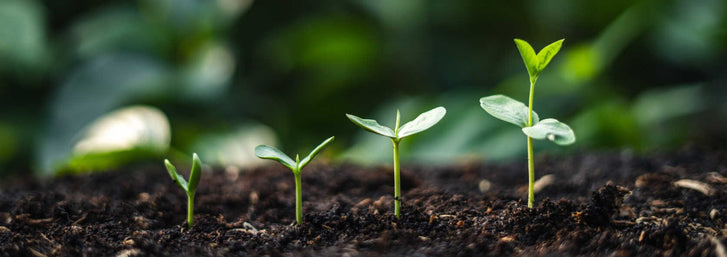
Erica Groneman

If you’re a home gardener, you’ve probably seen or heard about raised garden beds. What’s the hype? What are the pros and cons of raised beds? What will work best for you? Let’s take a look.
First of all, what is a raised garden bed? Raised garden beds are containers that hold enough soil to grow several plants above the natural level of the ground. They are usually three to four feet wide, at least the same length, and six inches deep or more. If this is your first time gardening you can read about the basics of getting started with our victory garden article.
Pros of Raised Garden Beds
There are a lot of benefits to raised garden beds. First, many people use raised beds to maximize their space. If you want a good harvest but don’t have a lot of space, a raised bed might be right for you.
Second, you can easily amend the soil of a raised bed because you’re in control of the standard of soil that you start with, rather than working with the native soil that is already there. Some of the most common soil ammendments include Perlite, Vermiculite, Coconut Coir, elemental sulfur, Compost, Azomite, Essential Mineral Nutrients, and Retain water retention crystals.
Third, raised beds are easy to weed and maintain with less physical strain on the back because you don’t have to bend over as far to work with the soil, or to harvest the produce. They also have no foot traffic to be aware of and deal with.
Fourth, raised beds are excellent for types of produce such as peppers, carrots, radishes, herbs, and almost anything with a trellis.
Fifth, raised beds are typically very aesthetically pleasing as they can be made with several types of materials.
Cons of Raised Garden Beds
However, raised beds can have some downsides. First, they cost more up front, since you’re buying materials for the walls and then buying the good soil mix to fill it with. You also might want to invest in a more complicated automatic watering system for your raised bed.
Second, raised beds are also more permanent and difficult to move.
Third, raised beds are not good for extra large gardens, but are typically more suited for smaller garden spaces. If you have a corn patch in your backyard, for example, you would probably do better to forego the raised bed and stick to the traditional in-ground gardening methods.
Fourth, raised beds aren’t as well suited for plants that take up a lot of space, like pumpkins, watermelons, or squash.
After looking at the pros and cons, what is right for you? Factors to consider include space, budget, gardening methods, and what you plan to grow. Ultimately it just depends on personal preference.
Happy Gardening!
About the Author

Hi, I’m Erica Groneman. I am a mom, volunteer, and a gardener. There’s something satisfying about getting my hands dirty and watching things grow. I believe gardening is universal and crosses all boundaries, bringing us all together. I hope we can share in the joy of growing together. Thanks for stopping by!
Become a True Leaf Market Brand Ambassador! You’ll enjoy awesome perks, free products and exclusive swag & offers! Help us create a gardening revolution and help others experience the joy of growing!
Leave a comment
Your email address will not be published. Required fields are marked *
1 comments
Rosie Cooper
I want to start a garden on newly purchased acreage with an older home. I don’t think it has been used for gardening. Biggest problem is the abundance of moles. How can i get rid of them, as they would likely destroy my crops.
Further Reading

Reviewing the Aquatree Garden: A True Leaf Market Experience
The AquaTree Garden is an innovative growing experience! This nifty appliance allows you to grow leafy greens, microgreens, herbs, large sprouts, and vegetable starts (like tomatoes) all at once! When it comes to indoor gardening, there is no question ...

Ashleigh Smith
2024-04-225 min read1
Parasitoid Wasps: A Beneficial Insect in the Garden
Written By Lara Wadsworth There are estimated to be around one million different species of parasitic wasps worldwide. In fact, most wasps are parasitic, which means they live on or in a host at the host's expense. For common garden pests like aphids, ...

Ashleigh Smith
2024-04-226 min read0
Succession Planting: The Key to a Continual Harvest
Do you find yourself harvesting large amounts of any given vegetable from your garden all at once? There is a solution! The practice of succession planting, or planting in segments over a period of time, allows you to harvest root vegetables, leafy gre...

Ashleigh Smith
2024-04-223 min read1
10 Natives of the Southwest USA for Pest Control
Written By Lara Wadsworth The Southwestern United States is a region incredibly unique to the rest of the country. The hot, dry weather can be challenging for plants and animals to thrive without additional help. That is why gardening with natives can ...

Ashleigh Smith
2024-04-157 min read0



